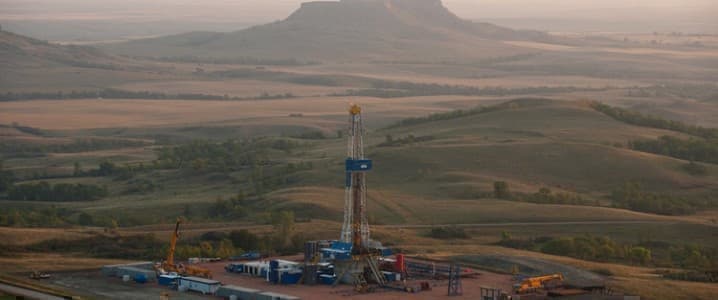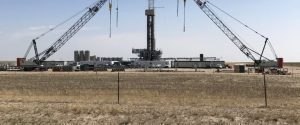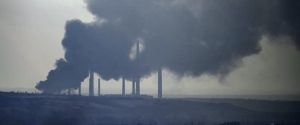Oil And Gold Forecast, News and Analysis:
- Home
- Latest Energy News
North Dakota Crude Output Cut By 520,000 b/d After October Wildfires
North Dakota, the third-largest producing state in the U.S., saw its crude production fall by 520,000 barrels per day in October after operators shut in wells to protect against wildfire damage. October production declined to 1.178 million barrels per day (bpd), with production yet to return to pre-crisis levels. According to Mark Bohrer, assistant director of the oil and gas division at the North Dakota Department of Mineral Resources, the state’s rig count is currently steady at 37 in December, but could increase to the mid-40s over the next couple of years.
However,the halcyon days of the Bakken Boom that turned North Dakota into the nation’s second-largest crude oil-producing state behind only Texas are over. Last year, crude production in the higher-cost Bakken region clocked in at ~ 1.27 million barrels per day (bpd), nearly 18% below the late 2019 peak, with Wood Mackenzie estimating it will fall further to 1.15 million bpd by 2026 as inventory exhaustion sets in. Given this backdrop, it’s surprising that the North Dakota Public Service Commission inexplicably rejected an application by Summit Carbon Solutions to build a pipeline that would bring carbon dioxide from ethanol plants in the Upper Midwest to be stored underground in North Dakota. North Dakota Mineral Resources director Lynn Helms did not not comment on the PSC’s decision but acknowledged the importance of bringing CO2 from out of state to North Dakota for enhanced oil recovery.
‘;
document.write(write_html);
}
“Carbon dioxide has to come to North Dakota from somewhere, if we’re going to stabilize and sustain Bakken oil production. So, we’ve got to find a way for carbon capture and utilization to become a part of North Dakota’s economy, or we will leave billions of barrels of oil in the ground,” Helms said. Over the past five fiscal years, oil extraction and production taxes have brought in more than 51% of all taxes collected by North Dakota–more than sales, property or other taxes combined. The state’s decision is even more puzzling when you consider that there are several Carbon Capture, Utilization & Storage (CCUS) projects in North Dakota–at the Rainbow Energy Coal Creek Station, the Great Plains Synfuels Plant and “Project Tundra” at the Milton R. Young power station. Meanwhile, a pipeline also brings CO2 from Wyoming to the southwestern part of the state, for enhanced oil recovery (EOR).
By Alex Kimani for Oilprice.com
More Top Reads From Oilprice.com
- Forget Short-Term Noise: Oil Prices Are All About the Long-Term Trend
- Hurricane Fury in 2024 Slows US Gulf Energy Production
- Israel Strikes Yemen Energy Targets in Latest Middle East Flare-Up
Join the discussion | Back to homepage
`;
document.write(write_html);
}
Alex Kimani
Alex Kimani is a veteran finance writer, investor, engineer and researcher for Safehaven.com.
More Info
Leave a comment
-
is the production restored
Leave a comment
Source: https://oilprice.com/




